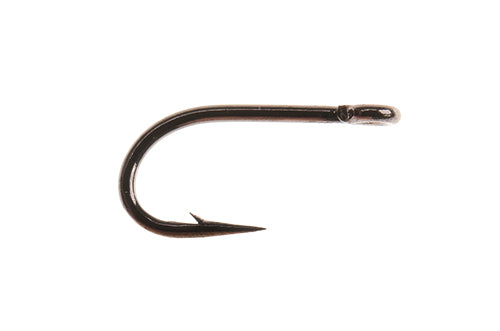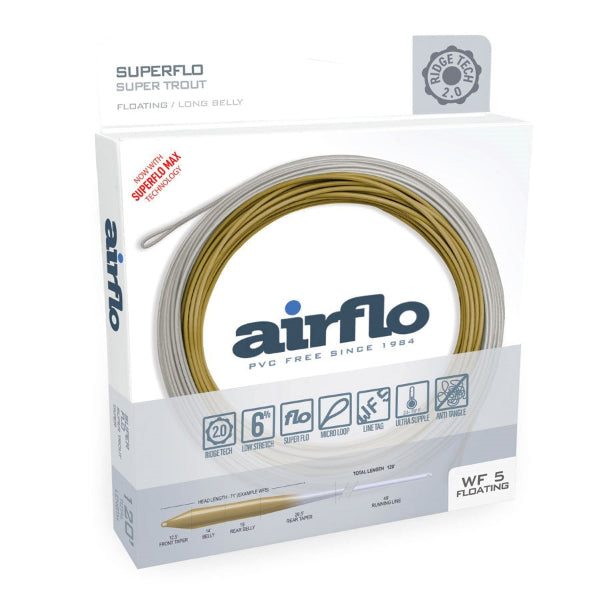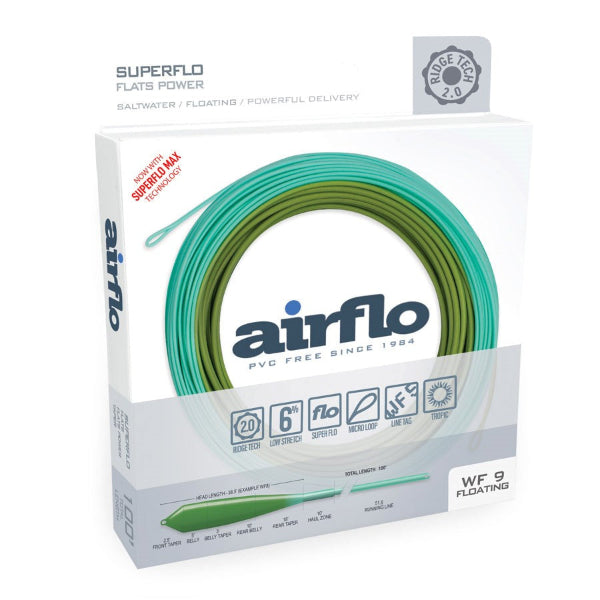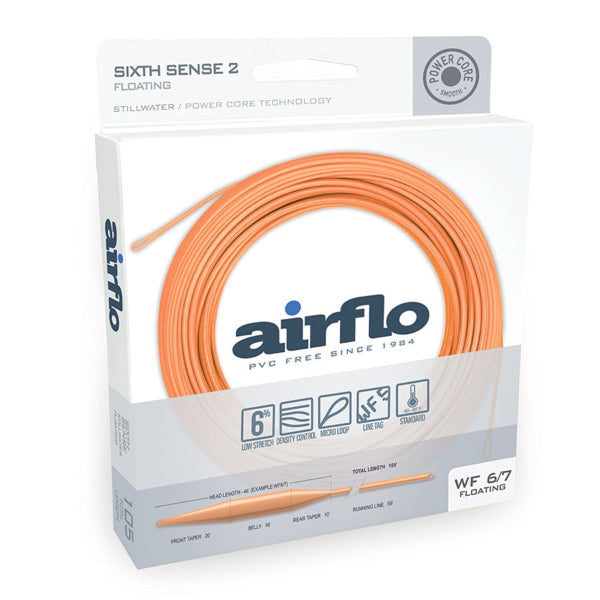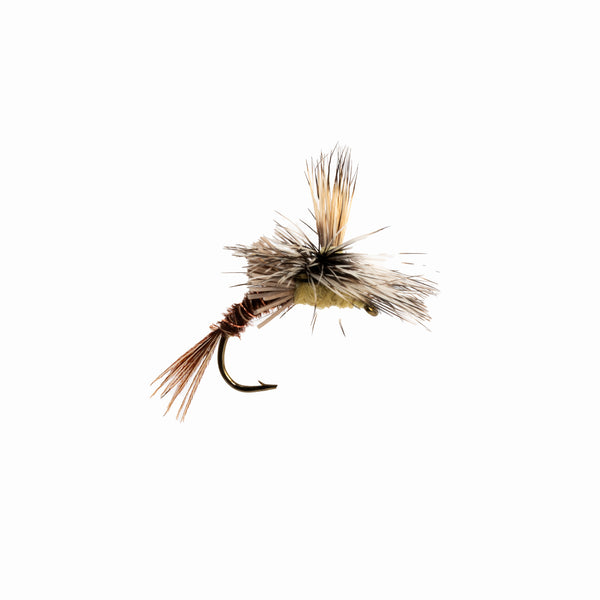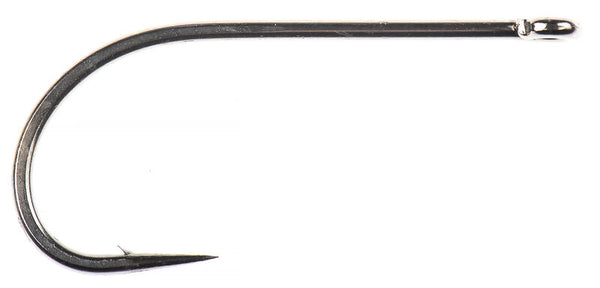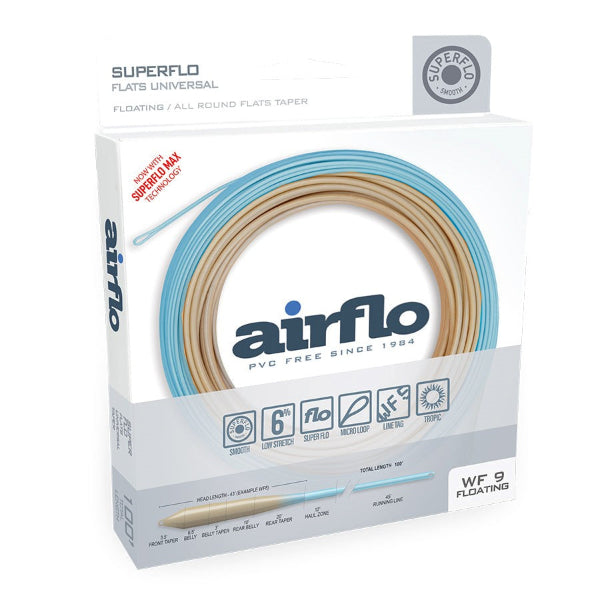The Crackleback pattern has its roots in the Ozark region of Missouri, where it was initially designed by Ed Story, a prominent figure in Midwestern fly fishing circles. Story, a Missouri-based fly tier and founder of Feather-Craft Fly Fishing, was known for his contributions to fly design and his commitment to creating simple but effective patterns. He developed the Crackleback in the 1960s to mimic a wide range of insects, especially in trout streams around the Ozarks.
The fly’s unique design is a blend of traditional dry fly and wet fly elements. This versatility allows anglers to fish it on the surface, in the film, or even below the water as a nymph or streamer. Story intended the Crackleback to be simple to tie and effective in various conditions, making it an excellent choice for beginner and experienced fly fishers alike.

Characteristics and Effectiveness of the Crackleback
The Crackleback stands out due to its unique appearance and presentation versatility. The fly typically features a distinctive back made from peacock herl that gives it a “crackling” effect, which is where the fly gets its name. The peacock herl, combined with the fly’s hackle, creates a shimmering profile that imitates the natural movement of various insects.
This fly’s unique look and effective design allow it to represent a range of insects and small prey, from caddisflies and mayflies to beetles and even small baitfish when fished subsurface. It can be dead-drifted, skated, stripped, or fished on the swing. Its simple construction allows fly anglers to tie it in various sizes and colors, though the traditional olive, brown, and natural shades remain the most popular.

Materials Required for the Crackleback
The Crackleback pattern is relatively simple, relying on only a few materials. Here’s a standard materials list for tying the classic Crackleback fly:
- Hook: Dry fly hook, typically sizes 10-16 (for targeting trout) or larger for panfish
- Thread: Olive, brown, or black, 6/0 or 8/0, depending on the size of the hook
- Body: Dubbing, usually in olive, tan, or other earth tones
- Ribbing (optional): Fine copper or gold wire to add durability
- Back: Peacock herl, typically two or three strands
- Hackle: Brown or grizzly dry fly hackle to match the body color
While this is the standard list, many anglers experiment with the Crackleback, incorporating different materials and color combinations. The fly’s simplicity makes it easy to adapt to specific local fishing conditions.
How to Tie the Crackleback Fly Pattern
Step 1: Secure the Hook and Start the Thread
Place a dry fly hook in the vise and start the thread just behind the hook eye. Wrap the thread down toward the bend, stopping a short distance before reaching the bend. Be sure to maintain a smooth thread base, which will help secure subsequent materials.
Step 2: Apply Dubbing or Turkey Rounds for the Body
Select a small amount of dubbing in an earth tone, such as olive or tan, and apply it to the thread in a thin layer. Carefully wrap the dubbing around the hook shank, moving from the bend to just behind the eye of the hook. The body should be slim and even, with a gentle taper from the back to the front of the fly. If the choice are turkey rounds, choose pale yellow.
Step 3: Prepare the Peacock Herl
Take two or three strands of peacock herl and align them together. Secure the strands at the back of the hook, just behind the body, with tight thread wraps. Ensure they are aligned straight along the top of the hook shank, as this will form the distinctive “crackleback” feature.
Step 4: Tie in the Hackle
Select a hackle feather that matches the size of your hook and the color of the body. Furnace hackle is commonly used for the Crackleback, though other colors can work as well. Tie in the hackle at the base of the body, where the peacock herl was secured. Wrap the thread forward, creating an even base for the hackle.
Step 5: Lay the Peacock Herl Over the Back
Carefully pull the peacock herl forward, laying it over the top of the wrapped hackle and dubbing. Secure the herl just behind the hook eye with several firm wraps. This creates the signature “crackleback” effect, with the herl glistening and imitating the back of an insect.
Step 6: Wrap the Hackle
Palmer the hackle forward over the dubbed body, spacing each wrap evenly. This will create a segmented, bristly effect on the body, imitating legs or wings. Stop wrapping the hackle just behind the hook eye and secure it with a few tight thread wraps.
Step 7: Finish the Fly
Once the herl is secured, trim any excess material and whip finish the thread just behind the eye. Apply a small drop of head cement for durability if desired. The completed Crackleback should have a distinct, shiny back with a full hackle body that gives it a realistic and enticing profile.
Variations of the Crackleback
While the traditional Crackleback pattern has proven highly effective, fly tiers often experiment with variations to suit specific conditions or target species. Some popular adaptations include:
- Beadhead Crackleback: By adding a bead at the front, tiers can create a slightly weighted version for fishing below the surface. This variant can be effective in deeper pools or faster currents.
- Soft Hackle Crackleback: Replacing the dry fly hackle with soft hackle gives the fly more movement underwater. This variation is especially popular when fished on the swing, as the soft hackle mimics the legs of an emerging insect.
- Foam Back Crackleback: In this variation, tiers use foam for the back instead of peacock herl. This creates a more buoyant fly, allowing it to float higher on the surface and better imitate terrestrial insects.
- Flashback Crackleback: Adding a strip of flashy material, such as tinsel or synthetic peacock, can enhance the fly’s visual appeal in low-light conditions or murky water.
Fishing the Crackleback Fly Pattern
The Crackleback’s design and versatility allow anglers to fish it in various ways, making it a true multi-purpose fly. Here are some common methods:
1. Dead Drift: When fished as a dry fly, the Crackleback can be dead-drifted across the surface to imitate a struggling insect. This presentation is effective in slower water, particularly during caddis or mayfly hatches.
2. Swinging as a Wet Fly: By casting the Crackleback across the current and allowing it to swing downstream, anglers can imitate an emerging insect. This method works well in riffles and fast-moving water, where trout are often looking for easy prey.
3. Stripping as a Streamer: When fishing the Crackleback subsurface, try stripping it back in short, quick bursts. This action can mimic small baitfish or nymphs and is especially effective for bass and panfish.
4. Skating on the Surface: A popular technique in faster water is to “skate” the Crackleback across the surface, which can trigger strikes from aggressive trout. This approach works well during caddisfly hatches, as it mimics the erratic movement of adult caddis on the water.

The Crackleback’s Influence on Fly Fishing
The Crackleback fly has earned a permanent place in the history of fly fishing due to its effectiveness and adaptability. Ed Story’s creation is a testament to his understanding of both fish behavior and angler needs. The Crackleback’s simplicity makes it accessible to novice fly tiers, while its effectiveness continues to impress seasoned anglers. It’s a staple in the Midwest, particularly in Missouri and Arkansas, where it remains a go-to fly on rivers like the White River, the North Fork of the White, and Taneycomo Lake.
Over the years, the Crackleback has also inspired countless other fly designs, especially in the realm of attractor patterns. Its adaptability and range of applications have encouraged anglers to think outside the box, using it in new ways and creating unique versions that suit their local waters.
Conclusion
The Crackleback is more than just a fly pattern; it’s a piece of fly fishing history and a versatile tool that anglers across North America use to target various fish species. Its creation by Ed Story stands as a tribute to the importance of innovation in fly design. The Crackleback’s ability to be fished as both a dry and wet fly, combined with its simple yet effective design, has cemented its reputation as a classic and essential fly pattern. Whether you're an experienced angler or just beginning to explore fly tying, the Crackleback offers both a learning opportunity and a reliable pattern that will produce results on the water.


